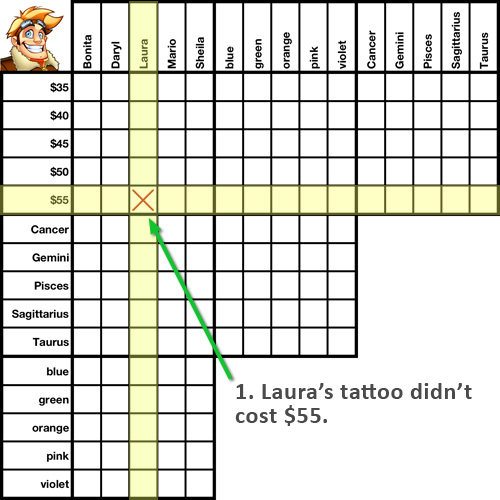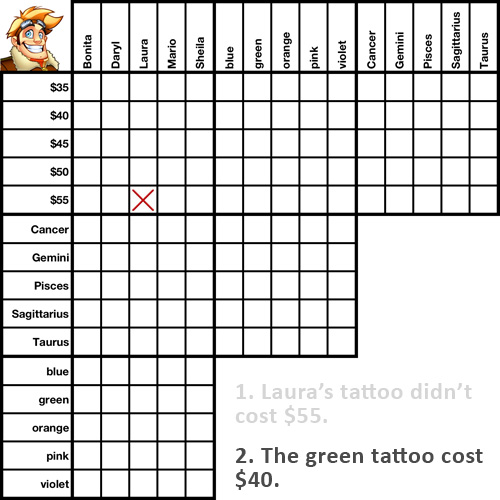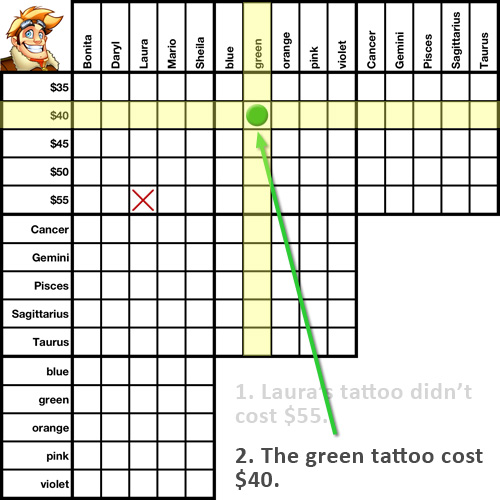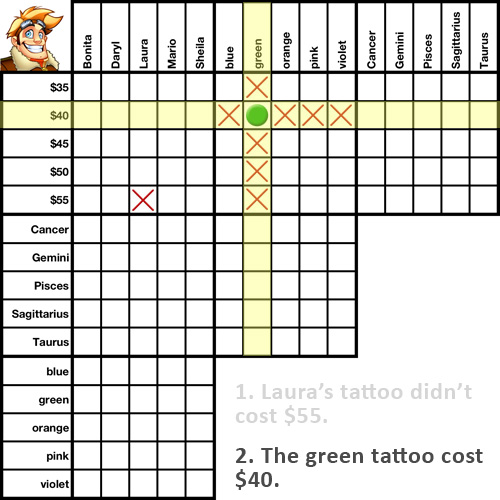The easiest types of clues in logic puzzles are generally the true and false clues, as they lay out a simple one-to-one proposition, i.e. A is equal to B, or A is not equal to B.
In this first example, we have a false clue: "Laura's tattoo didn't cost $55." How do we represent this relationship on the grid?






